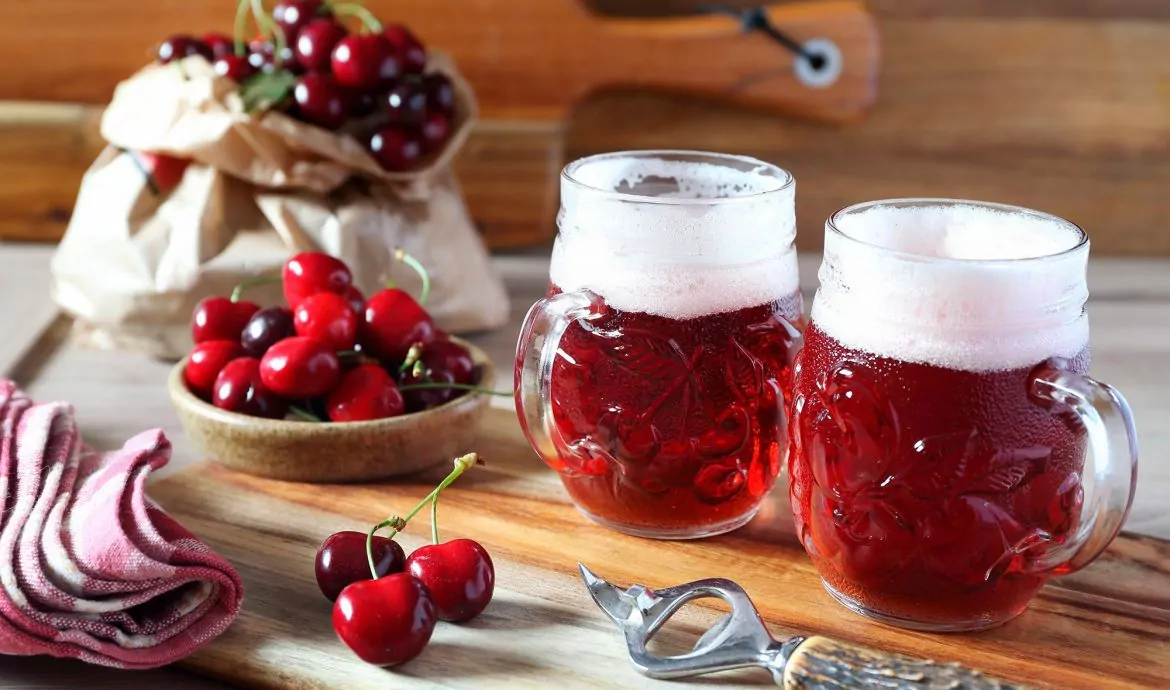The Belgian lambics with cherries and raspberries tell us that flavored beer is not a new trend in the market. However, fruit beers are becoming more popular as master brewers are looking for new flavors. And since brewing a good fruit beer doesn’t require any new equipment, it’s worth trying.
The idea here, though, is that the final product balances the taste of beer with the fruit, without one flavor overpowering the other. So, if you want to brew a fruit beer, there are a few things you have to consider to make it right.
How to make a good flavored beer
- First, select your base brew. It’s best to choose a style with little hops content. The bitterness doesn’t mix well with fruit. You don’t have to eliminate it, but it should be in the background. Simply choose a beer under 20 IBUs (wheat beer, porters, stouts, lambics, and lager beers).
- Then, select the fruit: fresh, concentrate, puree, or juice. Make sure that the last ones contain only fruit and natural preservatives. The one you choose will determine when it is added and the intensity of the flavor.
- Proceed to select the acidity. Since fruits have a lower pH than beers, a microbrewer would normally make their beers more acidic to get closer to the fruit’s natural pH and enhance the fruity taste of the flavored beer.
- Finally, select the sweetness. The most popular brewing fruits are low in sugar content so the flavor doesn’t get lost when the sugar is fermented.

Best techniques to brew a flavored beer
The technique comes down to when you add the fruit during the process. The moment will vary depending on the points presented above.
1. In the mash
All-grain brewers use fresh fruits in the mix and add them to the mash. Here, the sugars and flavors will be drained with the wort and then boiled. Any yeast and bacteria will be killed along with the risk of spoiling the flavored beer (See also: Microbrewery). However, after going through the first fermentation, most of the fruit aromas will be lost and the beer will have a cooked flavor. This works perfectly for pumpkin ales that are intended to taste like a cooked pumpkin.
2. In hot wort
If using fruit puree, juices, or concentrates, add the product after the boil but before the wort is cooled below 160° F. If you go for fresh fruits, you need to steep them in hot wort before, during, or after the boil. So, place the fruit in a nylon bag, submerge it for at least 30 minutes and stir every 5 minutes. Once it’s done, put the bag into a colander to let all the wort back into the kettle. The heat, once again, will kill the yeast and bacteria.
3. In secondary fermentation
Since fruits will not be subjected to heat at this time in the process, it’s better to use fruit purees, juices or concentrates rather than fresh products to avoid contamination. When mixing, slowly pour the fruit into the fermenter at the same time the beer is racked. Let it sit for about a week and then use a strainer to separate the beer from the residual fruits. The flavored beer will be more intense, as well as the fruit aromas.
There are so many factors in brewing a flavored beer that you will probably fail a few times before getting the perfect fruit brew for you. Once you get the hang out of it, you will get better results in every experiment you embark on.
References
COLBY, C. (N.D.). BREWING WITH FRUIT. BREW YOU OWN. RETRIEVED FROM HERE
COLBY, C. (N.D.). FRUIT BREWING TECHNIQUES. BREW YOU OWN.
RETRIEVED FROM HERE





















